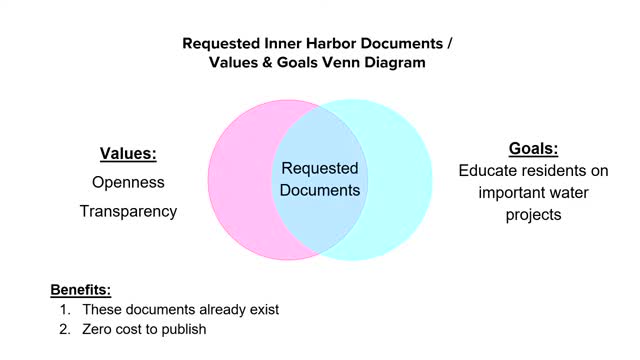City urged to release vital desalination models for public review
June 19, 2024 | Corpus Christi, Nueces County, Texas

This article was created by AI summarizing key points discussed. AI makes mistakes, so for full details and context, please refer to the video of the full meeting. Please report any errors so we can fix them. Report an error »

During a recent city council meeting, significant discussions emerged regarding the transparency of the city’s desalination modeling and the allocation of funding for District 2.
A key point raised involved the request for the city to publish its most recent core mix models from 2023. This request aligns with earlier inquiries from the Texas Parks and Wildlife Department, which emphasized the importance of understanding salinity gradients and concentrations in assessing the environmental impacts of desalination. The department highlighted that marine life, particularly larvae, is sensitive to changes in water quality, and accurate modeling is crucial for evaluating these impacts. Concerns were voiced about the Texas Commission on Environmental Quality (TCEQ) not receiving the updated models, which raises questions about the accuracy of the city’s permit application and the potential environmental risks associated with desalination practices.
The speaker urged the city to make these documents publicly available, arguing that doing so would educate the community on critical environmental factors and allow residents to assess the validity of the city’s models. The absence of this information, they argued, leaves the community uninformed about the potential consequences of desalination.
In a separate discussion, Susie Saldanha expressed dissatisfaction with the funding allocated to District 2, criticizing the perceived inequity in resource distribution. She called for more attention to be given to her district, arguing that the current allocation, which included only two fire stations, was insufficient. Saldanha emphasized the need for equitable distribution of city resources across all districts, rather than a focus on city-wide initiatives that may not address local needs.
These discussions reflect ongoing concerns about environmental accountability and equitable resource distribution within the city, highlighting the need for transparency and community engagement in local governance.
A key point raised involved the request for the city to publish its most recent core mix models from 2023. This request aligns with earlier inquiries from the Texas Parks and Wildlife Department, which emphasized the importance of understanding salinity gradients and concentrations in assessing the environmental impacts of desalination. The department highlighted that marine life, particularly larvae, is sensitive to changes in water quality, and accurate modeling is crucial for evaluating these impacts. Concerns were voiced about the Texas Commission on Environmental Quality (TCEQ) not receiving the updated models, which raises questions about the accuracy of the city’s permit application and the potential environmental risks associated with desalination practices.
The speaker urged the city to make these documents publicly available, arguing that doing so would educate the community on critical environmental factors and allow residents to assess the validity of the city’s models. The absence of this information, they argued, leaves the community uninformed about the potential consequences of desalination.
In a separate discussion, Susie Saldanha expressed dissatisfaction with the funding allocated to District 2, criticizing the perceived inequity in resource distribution. She called for more attention to be given to her district, arguing that the current allocation, which included only two fire stations, was insufficient. Saldanha emphasized the need for equitable distribution of city resources across all districts, rather than a focus on city-wide initiatives that may not address local needs.
These discussions reflect ongoing concerns about environmental accountability and equitable resource distribution within the city, highlighting the need for transparency and community engagement in local governance.
View full meeting
This article is based on a recent meeting—watch the full video and explore the complete transcript for deeper insights into the discussion.
View full meeting
